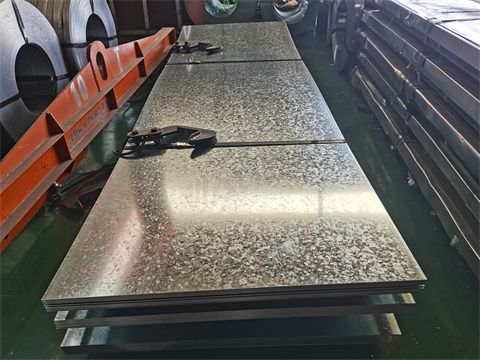Hot dipped galvanized steel coil
Contents |
[edit] Introduction
One of the most popular forms of galvanized steel bought from coils is hot dipped.
This means that there will likely be a zinc layer on the outside of the sheets that will act as a barrier, separating the galvanized steel from outer elements. It is then far more durable than common steel sheets. Essentially, it is positioned in a molten bath of pure zinc, ultimately causing chemical changes that will make it much more durable.
[edit] How does the hot-dipped galvanizing (HDG) process work?
This technique, also called HDG, is now a lot more common. Galvanizing is basically the process of adding a coating on any base metal for the purpose of increasing corrosion resistance and durability. Hot-dip galvanizing is a form of galvanization. It is the process of coating iron and steel with zinc. That is, the surface of the base metal is coated with a zinc layer by immersing the metal in a bath of molten zinc at a temperature of around 450 °C (842 °F).
Galvanized steel is widely used in applications where corrosion resistance is needed. But its cost is much lower than the cost of stainless steel.
[edit] Difference between hot-dip galvanizing and cold galvanizing
In hot-dip galvanization, the base metal is dipped into a bath of molten zinc at 450 °C. The zinc coating is thicker. Cold galvanizing is where the zinc salt solution is plated to the base metal by the process of electrolysis. This process does not involve any kind of heating. During the process of cold galvanizing, the zinc is deposited on the base metal at the anode which is thin and may not be uniform. As it is conducted in a wet environment, the coating layer of zinc can come off quite easily.
Generally, materials that are simply galvanized may last at least 30 years. The addition of zinc on the outside, as well as the metallurgical process that will occur, will allow it to last many extra decades. It's also possible to get similar results by having a zinc-iron alloy instead.
[edit] Related articles on Designing Buildings Wiki
Featured articles and news
Homes England supports Greencore Homes
42 new build affordable sustainable homes in Oxfordshire.
Zero carbon social housing: unlocking brownfield potential
Seven ZEDpod strategies for brownfield housing success.
CIOB report; a blueprint for SDGs and the built environment
Pairing the Sustainable Development Goals with projects.
Types, tests, standards and fires relating to external cladding
Brief descriptions with an extensive list of fires for review.
Latest Build UK Building Safety Regime explainer published
Key elements in one short, now updated document.
UKGBC launch the UK Climate Resilience Roadmap
First guidance of its kind on direct climate impacts for the built environment and how it can adapt.
CLC Health, Safety and Wellbeing Strategy 2025
Launched by the Minister for Industry to look at fatalities on site, improving mental health and other issues.
One of the most impressive Victorian architects. Book review.
Common Assessment Standard now with building safety
New CAS update now includes mandatory building safety questions.
RTPI leader to become new CIOB Chief Executive Officer
Dr Victoria Hills MRTPI, FICE to take over after Caroline Gumble’s departure.
Social and affordable housing, a long term plan for delivery
The “Delivering a Decade of Renewal for Social and Affordable Housing” strategy sets out future path.
A change to adoptive architecture
Effects of global weather warming on architectural detailing, material choice and human interaction.
The proposed publicly owned and backed subsidiary of Homes England, to facilitate new homes.
How big is the problem and what can we do to mitigate the effects?
Overheating guidance and tools for building designers
A number of cool guides to help with the heat.
The UK's Modern Industrial Strategy: A 10 year plan
Previous consultation criticism, current key elements and general support with some persisting reservations.
Building Safety Regulator reforms
New roles, new staff and a new fast track service pave the way for a single construction regulator.























